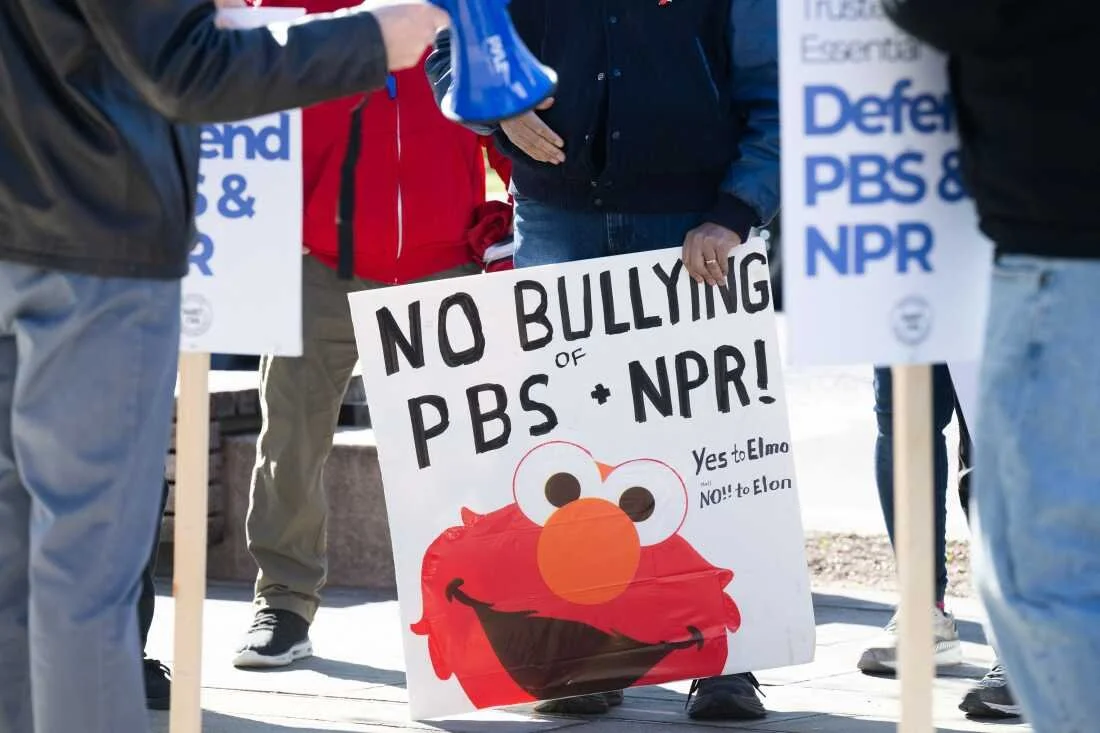Pulling the Plug on PBS
Asmi Aggarwal & Alyssa Kim
Wild Kratts, Arthur, Curious George, Sesame Street — sound familiar? Public Broadcasting Service (PBS) shows have shaped the way generations of students learned, laughed and grew. For many of us, they weren’t just TV shows: they were our earliest teachers and first exposure to the ABCs. However, the legacy of PBS is now at risk after federal funding cuts.
The origin of PBS dates back to the Public Broadcasting Act of 1967, which established the Corporation for Public Broadcasting (CPB) as one of its principal funders. As a federally subsidized nonprofit, the CPB distributed grants to public broadcasters such as PBS. PBS succeeded the National Educational Television network in 1970, consolidating disparate programming into a nationwide system. Since then, it has produced more than 120 original series and distributed hundreds more — providing free, high-quality educational content that advances children’s intellectual and social development.
That legacy, though, has come under political scrutiny in past years. In recent budget debates, President Trump approved $9 billion in foreign aid cuts including $1.1 billion aimed at defunding the CPB, PBS’s primary federal backer. However, such measures were not completely unprecedented. Throughout his first term, Trump repeatedly sought to reduce allocations to public broadcasting, claiming PBS and NPR reflect liberal biases and no longer warranted taxpayer support. Congress blocked these efforts, defending public broadcasting as an essential source of educational and cultural programming.
Trump’s second-term initiatives, nevertheless, proved more decisive. With the signing of an executive order titled “Ending Taxpayer Subsidization of Biased Media” and the passage of the Rescission Act of 2025, funding from PBS was formally withdrawn. Officials framed the cuts as a strategy to curb federal spending and shift educational authority to states and private groups. On Aug. 1, the CPB announced its planned shutdown by January — effectively dismantling the system that had sustained PBS for decades.
The erosion of PBS has simultaneously created space for alternative media to shape classroom instruction, marking a profound ideological shift in American education. Recently, conservative media nonprofit PragerU has been gaining traction in schools across the country. Founded in 2009, the organization produces short videos on history, civics and culture, several of which have been approved for use in some states. Although no policy has formally positioned PragerU as a substitute for PBS, the Trump administration has consistently promoted the platform at various educational forums.
Much of its content has provoked sustained controversy among educators and scholars. One video, for example, portrays Frederick Douglass as defending the founders’ decision not to abolish slavery in the Constitution, claiming it ensured the Southern colonies’ support for the Union. Yet, the video omits his broader condemnation of slavery and the exclusion of African Americans, particularly evident in his declaration, “Our system is wonderful, and the Constitution is a glorious liberty document.” Critics argue such omissions distort his message and exemplify PragerU’s broader pattern of presenting inordinately conservative viewpoints that oversimplify complex historical realities. Produced largely by media personalities and activists rather than historians, its videos undergo no independent academic review which has raised questions about their reliability and value in the classroom.
Ultimately, for many viewers who grew up watching PBS on cable, recent developments might seem like the closure of an important childhood chapter. Nevertheless, the legacy of PBS is not being completely erased. These beloved shows are now anticipated to stream on different outlets which, with the steady support of viewers, will continue to provide programming for stations across the globe.
